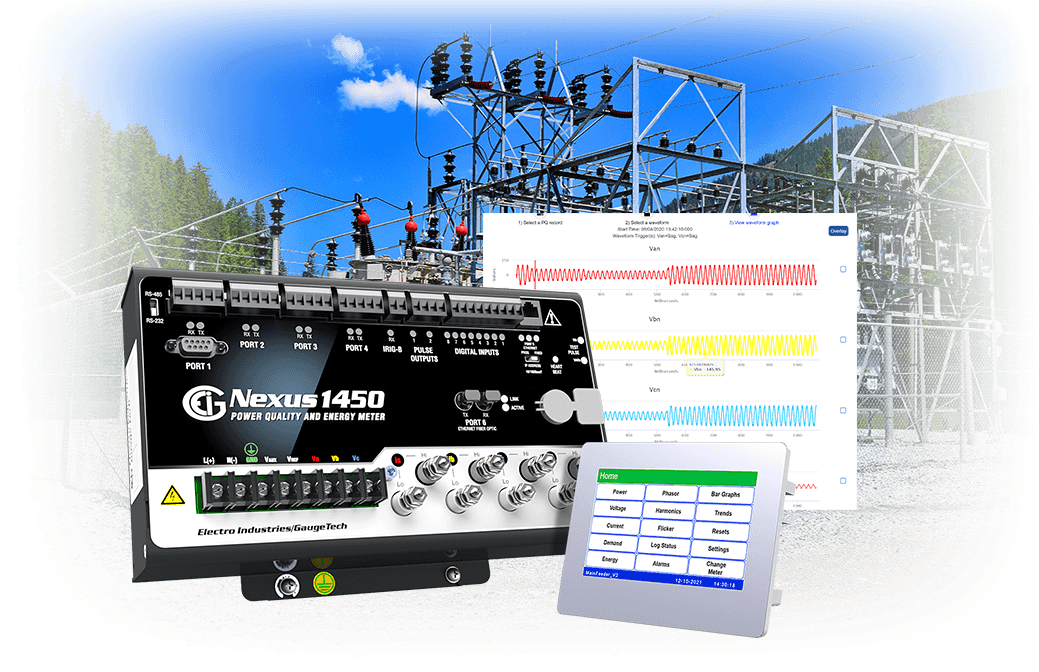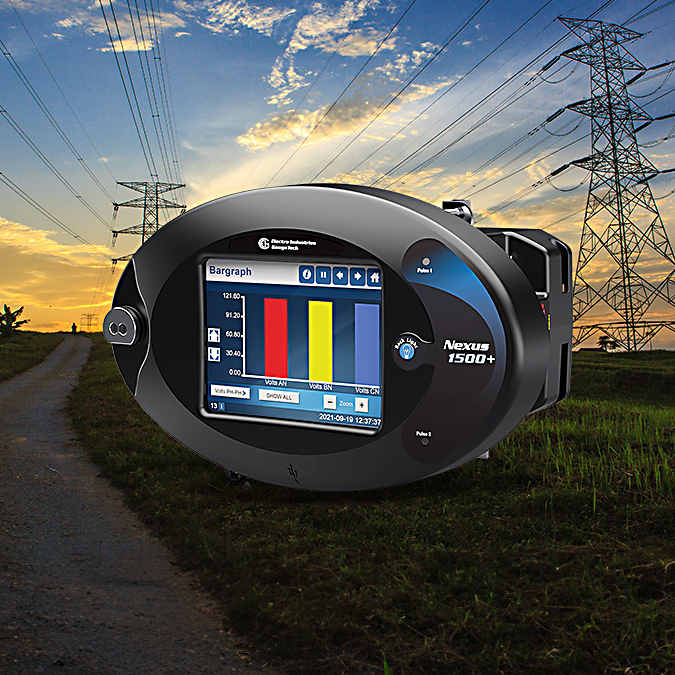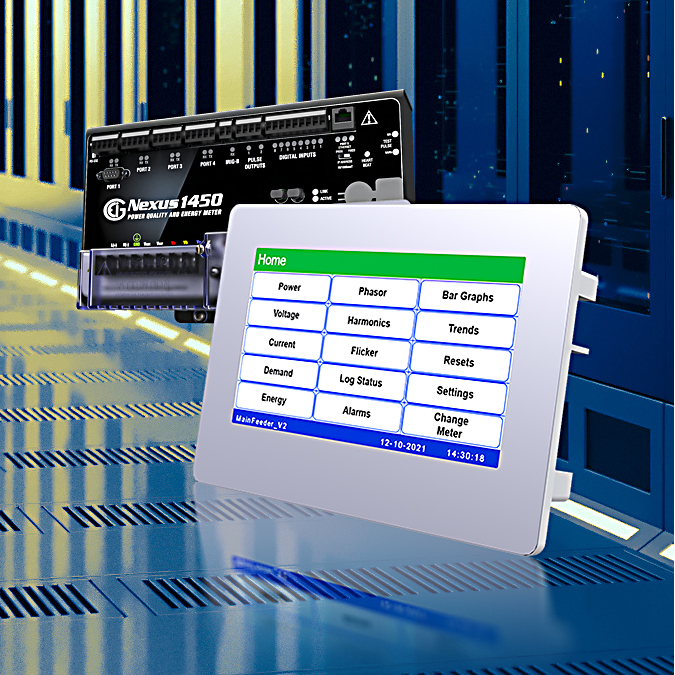Precision Revenue Metering
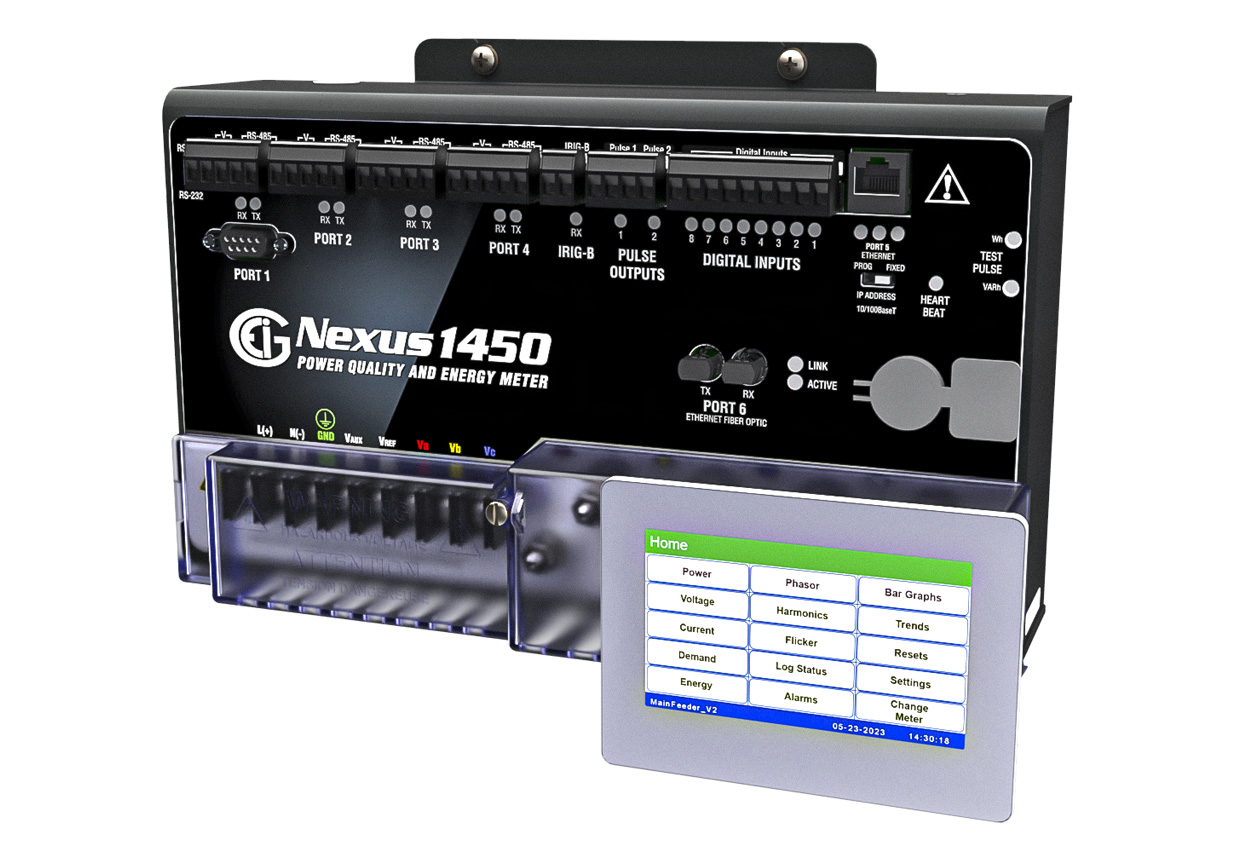
Introduction
Electro Industries’ Nexus® 1450 meter is a powerful power quality meter that provides accurate electrical energy measurements. It offers advanced capabilities for power quality analysis and determining electrical power reliability. The meter is a transducer base with a separate display. The transducer base retrofits to existing Electro Industries’ Nexus® 1250 and 1252 meters. The Nexus® 1450 power quality meter is ideal for existing switchboard panels since it can be installed without cutting panel doors. The separate display mounts into existing analog meter knockouts.
Multi-Gain™ Sensing Provides Superior Accuracy
EIG’s Latest Measurement Sensing Technology
- Patented technology provides 0.06% energy accuracy throughout extended measurement range, from start up to full scale.
- Multi-Gain™ technology uses two sensors on the current inputs to determine the optimal sensing circuit for the highest accuracy measurement.
- Standard pickup range starts as low as 1 mA – high accuracy is attained at 25 mA.
- Multi-Gain™ metrology enables one meter to be used on both 5 A and 1 A secondary CTs.
- The meter should maintain high accuracy measurement throughout its installed life.
- The power quality meter meets ANSI C12.20 0.1 and IEC 62053-22 0.2S accuracy classes.
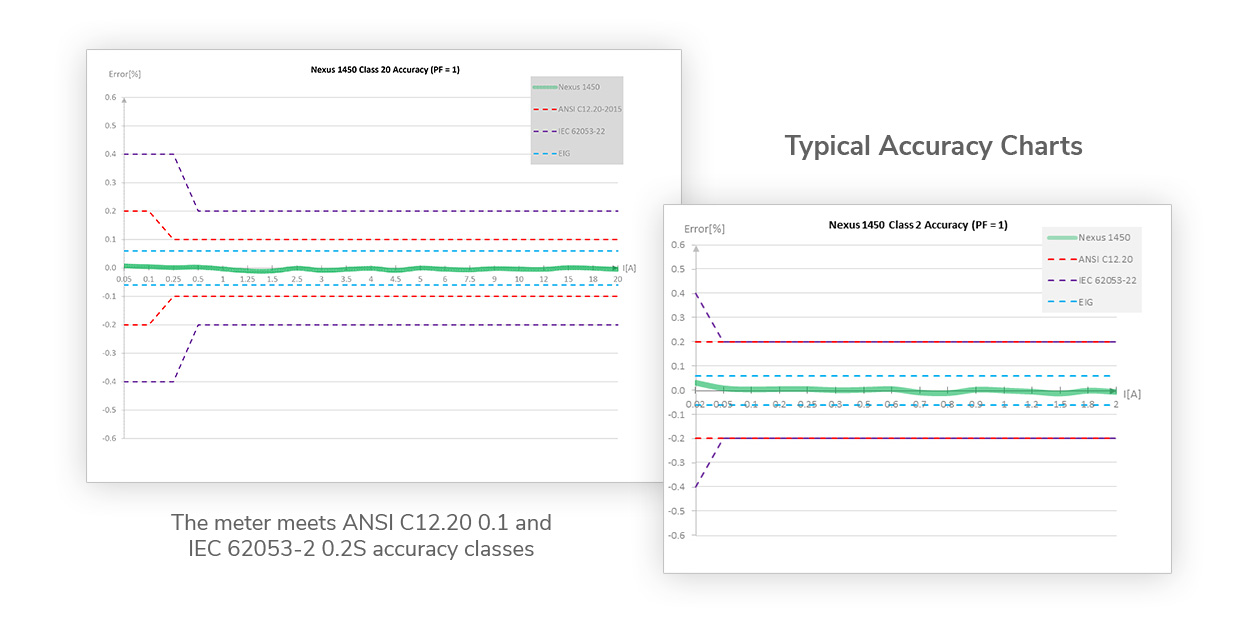
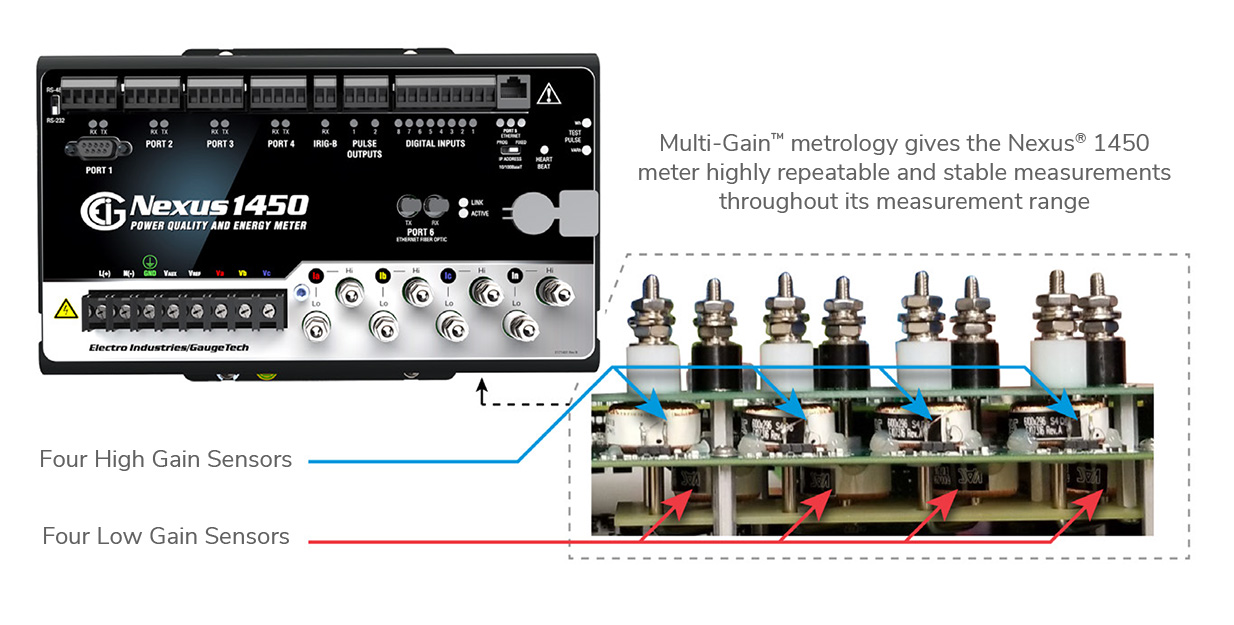
Advanced Energy Meter
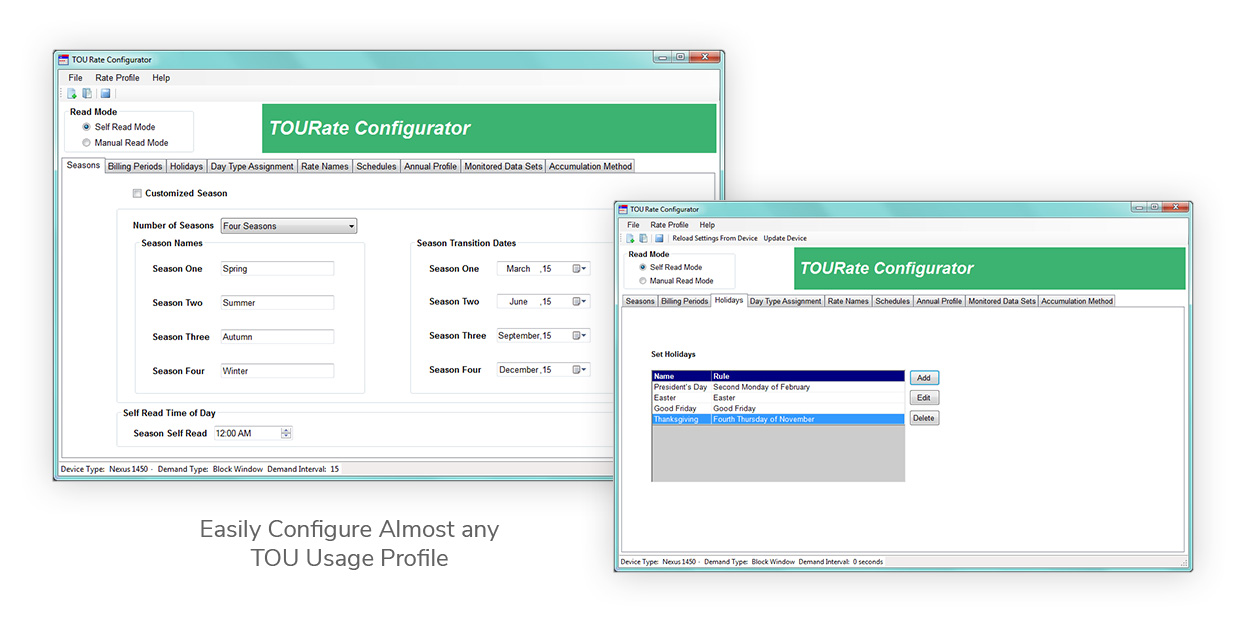
Advanced Energy Meter
Supports Primary Metering Load Requirements
- Full 4 quadrant metering, max/min recording with timestamp.
- Perpetual Time of Use.
- Transformer line loss compensation.
- Coincidental readings.
- Load aggregation/universal metering.
- Extensive logging with 8 logs of programmable historical profiles.
Power Quality Monitoring and Analysis
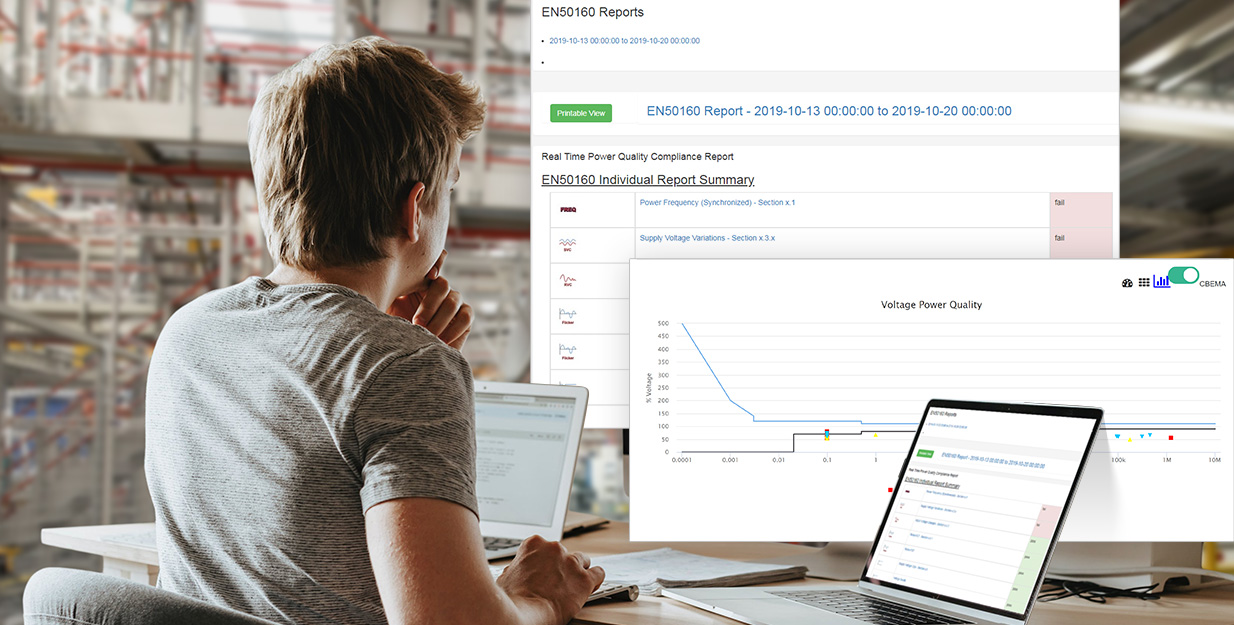
Power Quality Monitoring and Analysis
Save Money by Improving Reliability
- Certified to the highest international power quality standard – IEC 61000-4-30 Class A Ed. 3.
- Analyze power system health to reduce downtime.
- Collect power factor per circuit to correct worst scenarios.
- Monitor harmonics to assess the impact on equipment.
- Measure flicker and generate weekly EN 50160 power quality reports.
- Record waveforms at 1024 samples/cycle.
- Provides PQ reliability indices, including CBEMA and SEMI F47.
Advanced HTML5-based Web Server
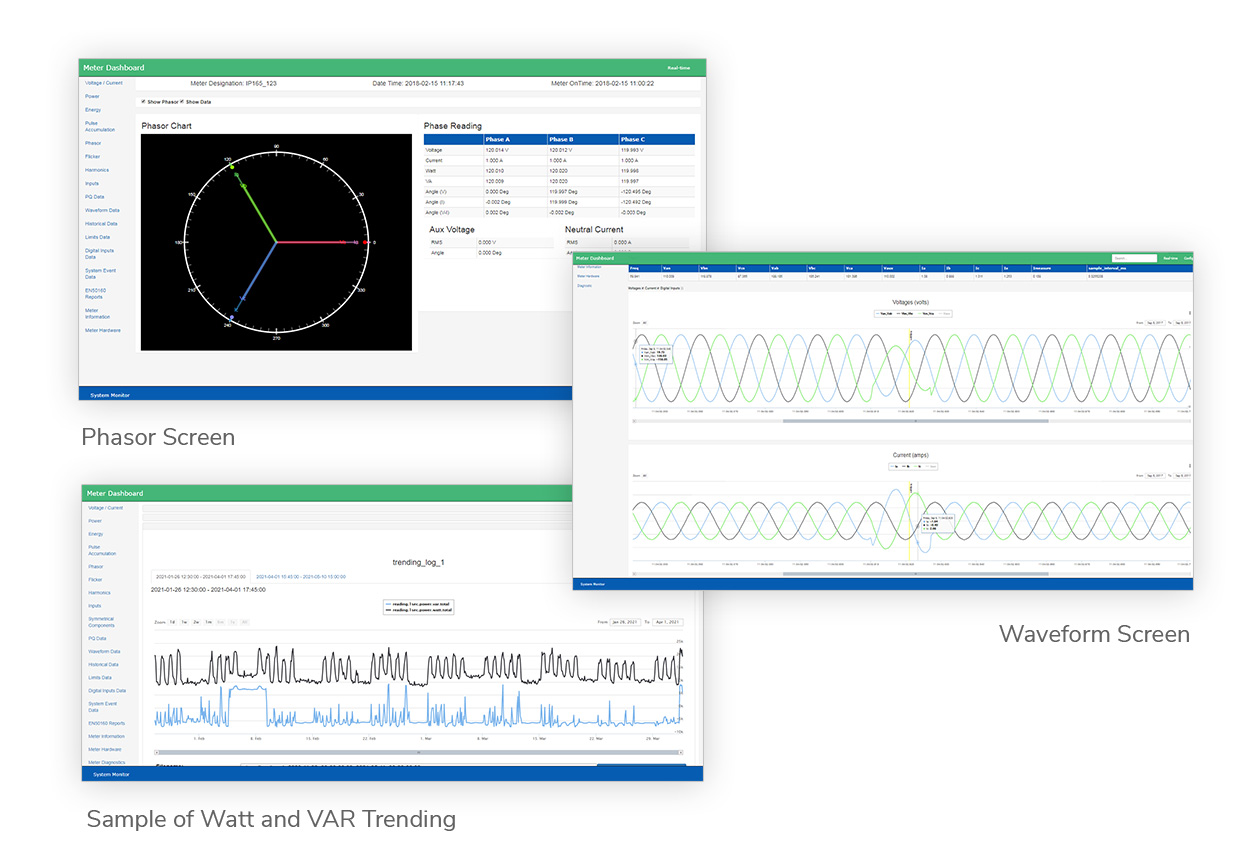
Advanced HTML5-based Web Server
Provides Waveform Analysis over the Internet
- Provides energy dashboard with real time voltage and current readings, detailed charts of energy usage over time, quadrant energy charts, and trending.
- Displays waveform event records and allows zoom and pan and overlay of voltage and current waveforms.
- Displays symmetrical components, phasor diagrams, flicker readings, status of high-speed digital inputs, and detailed information for accumulators and aggregators.
- Supplies meter and diagnostic information for meter health and status and enables firmware upgrade.
- Supports IEC 61850 file management.
Resilient Cyber Security™
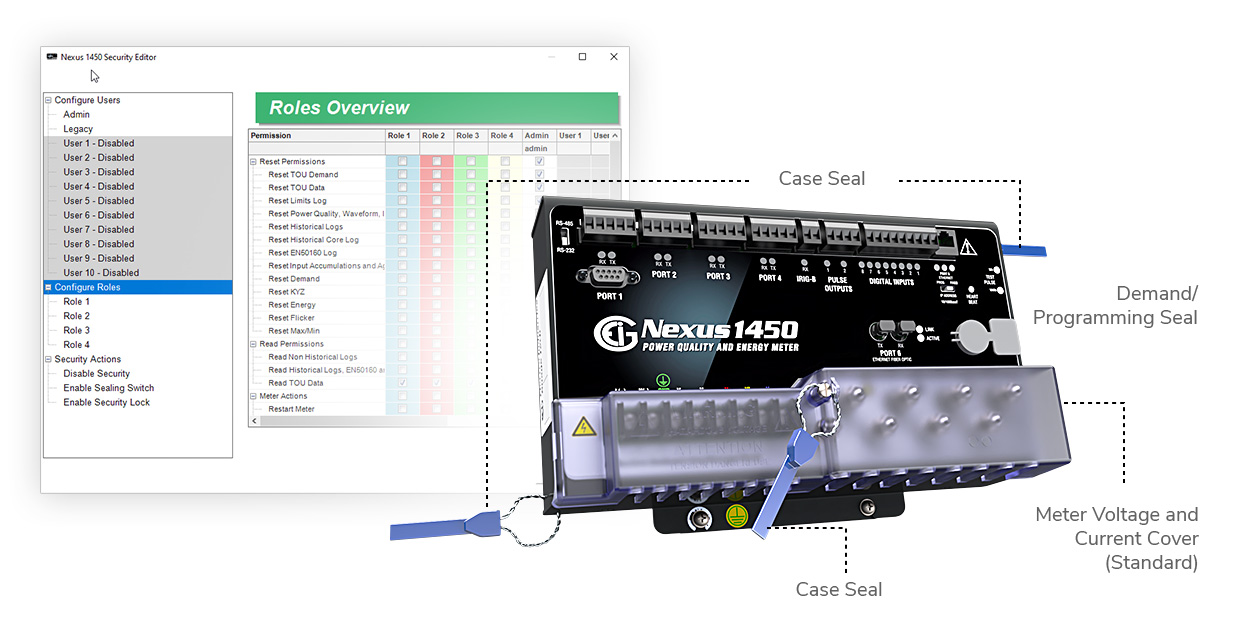
Resilient Cyber Security™
Prevent Attacks on Your Power System Data
- Highly secure, 32 complex character passwords with 128-bit AES encryption.
- Password fail timeouts virtually eliminate brute-force hacking.
- An Admin and 10 customizable users.
- Four roles with customized user permissions.
- 256-bit digital firmware signature, to ensure firmware integrity when updating the meter’s firmware.
- Sealing switch and physical seals prevent remote hacking or tampering.
Built-in CORE™ Log
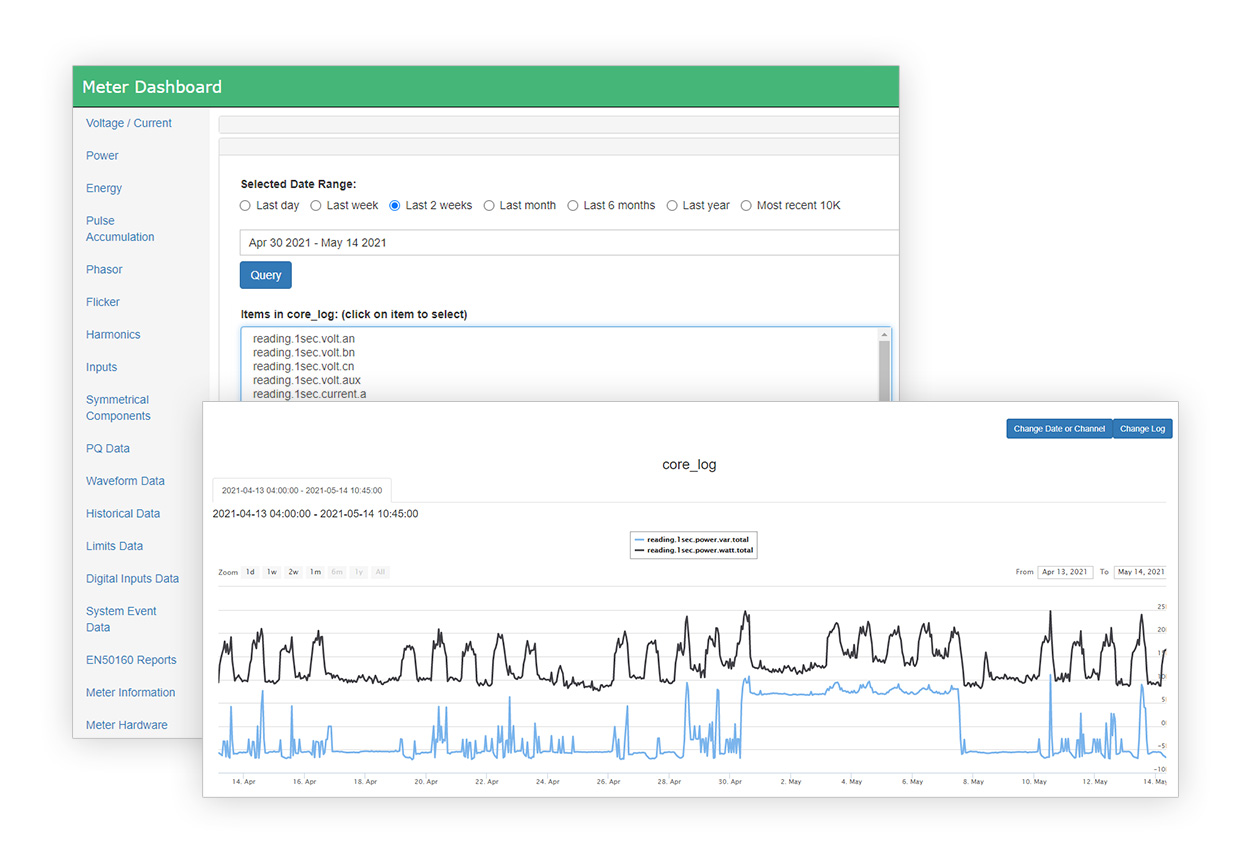
Built-in CORE™ Log
Automatically Stores Meter Readings
- The power quality meter uniquely uses an internal SQL database that automatically logs metering parameters.
- 172 metering parameters are logged at regular intervals.
- The CORE™ log ensures that most metering parameters are already logged – the power quality meter provides data without a complex configuration process.
Advanced Communication and I/O
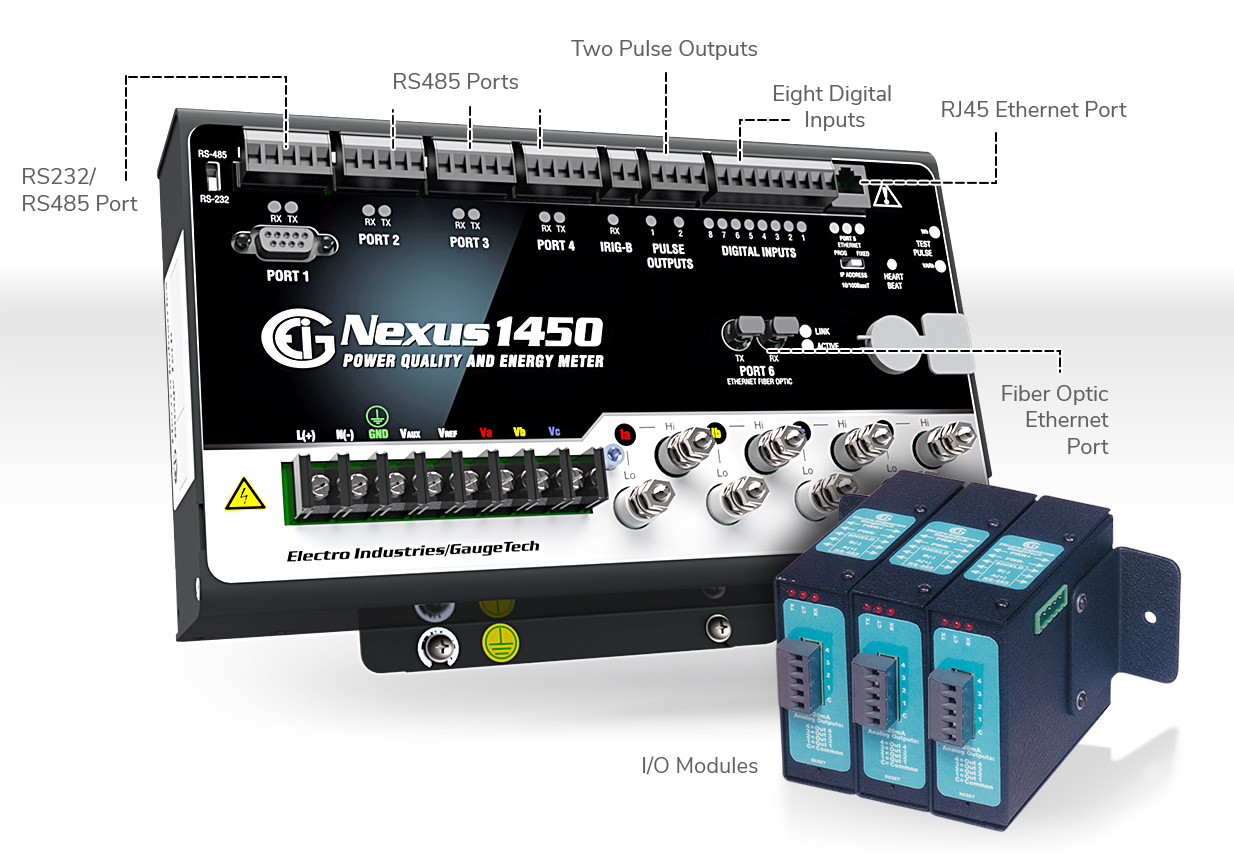
Advanced Communication and I/O
Six Standard, Simultaneous Communication Ports
- Up to 32 simultaneous protocol connections.
- 4 independent serial ports – 3 RS485 and 1 RS485/RS232 selectable.
- 2 independent Ethernet ports – RJ45 and Fiber Optic, with separate IP addresses, advanced port control, encrypted email on alarm, web server, and DHCP.
- Communication protocols include Modbus RTU, Modbus ASCII, Modbus TCP/IP, DNP3 Level 2, IEC 61850, IEC 61850 GOOSE, SMTP, SNTP.
- RS485 ports support RTU Master.
- 8 built-in digital status inputs, 2 standard pulse outputs.
- Multiple external I/O modules are available: digital and analog outputs, digital inputs, digital relay outputs, digital solid state pulse outputs.
- Up to 256 total points of I/O.
IEC 61850 Protocol Server
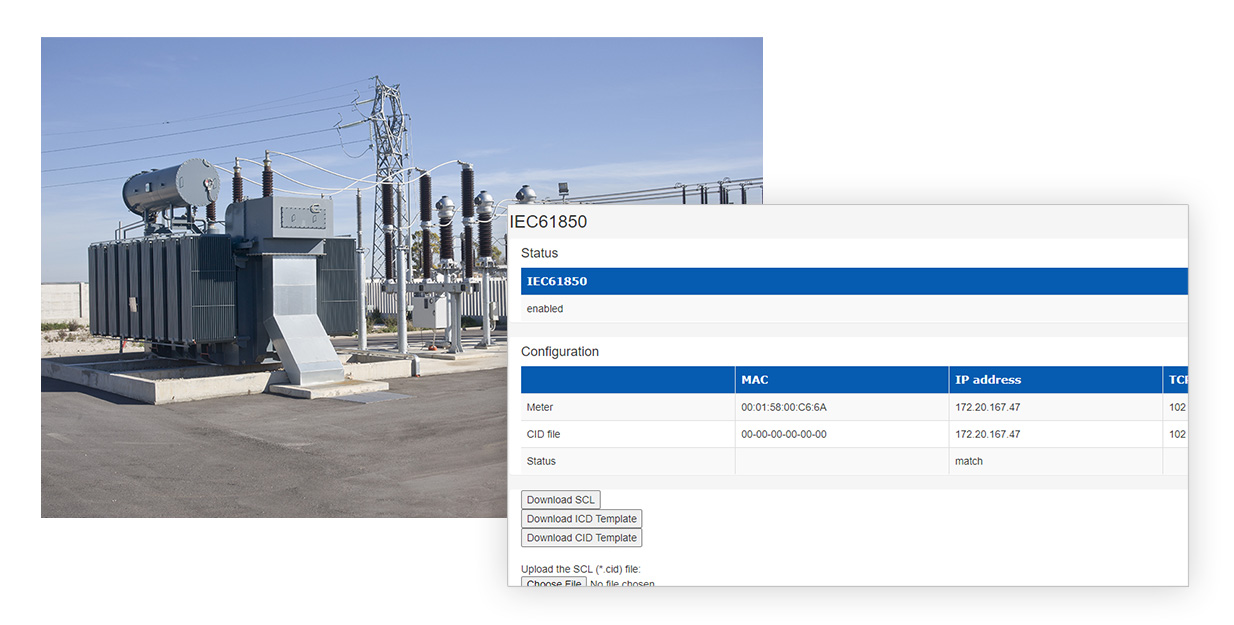
IEC 61850 Protocol Server
Supports Substation Automation
- IEC 61850 Edition 2.
- Either Ethernet port can be configured as an IEC 61850 protocol server.
- Up to 6 simultaneous MMS clients.
- Buffered and unbuffered reports.
- GOOSE messaging.
- Multiple pre-programmed logical nodes for power and energy values, power quality, and high-speed digital inputs.
- Web server supports downloading and uploading of CID files.
IEC 61850 GOOSE Messaging and Distributed Fault Recording
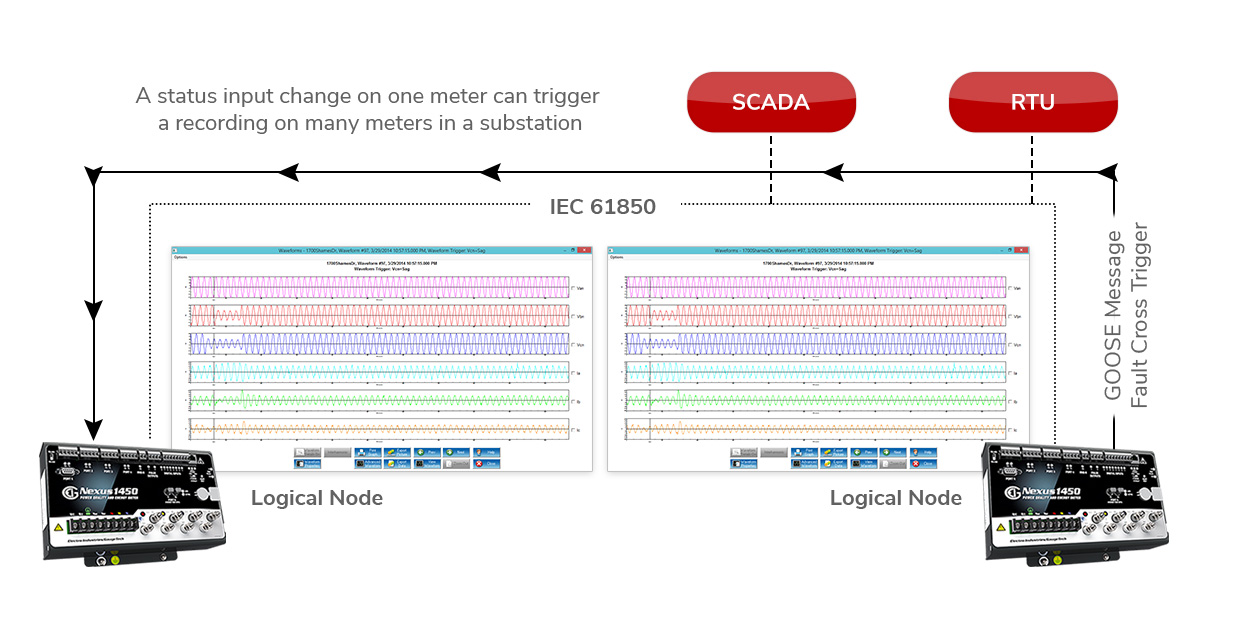
IEC 61850 GOOSE Messaging and Distributed Fault Recording
GOOSE Cross Trigger Support
- Unique distributed disturbance recording analysis improves substation reliability.
- Up to 16 user-programmed conditions to trigger system-wide waveform capture.
- Enables analysis of power quality events across the power system.
- See how EIG’s Distributed Fault Recording works.
Direct Retrofit with Advanced Remote Displays
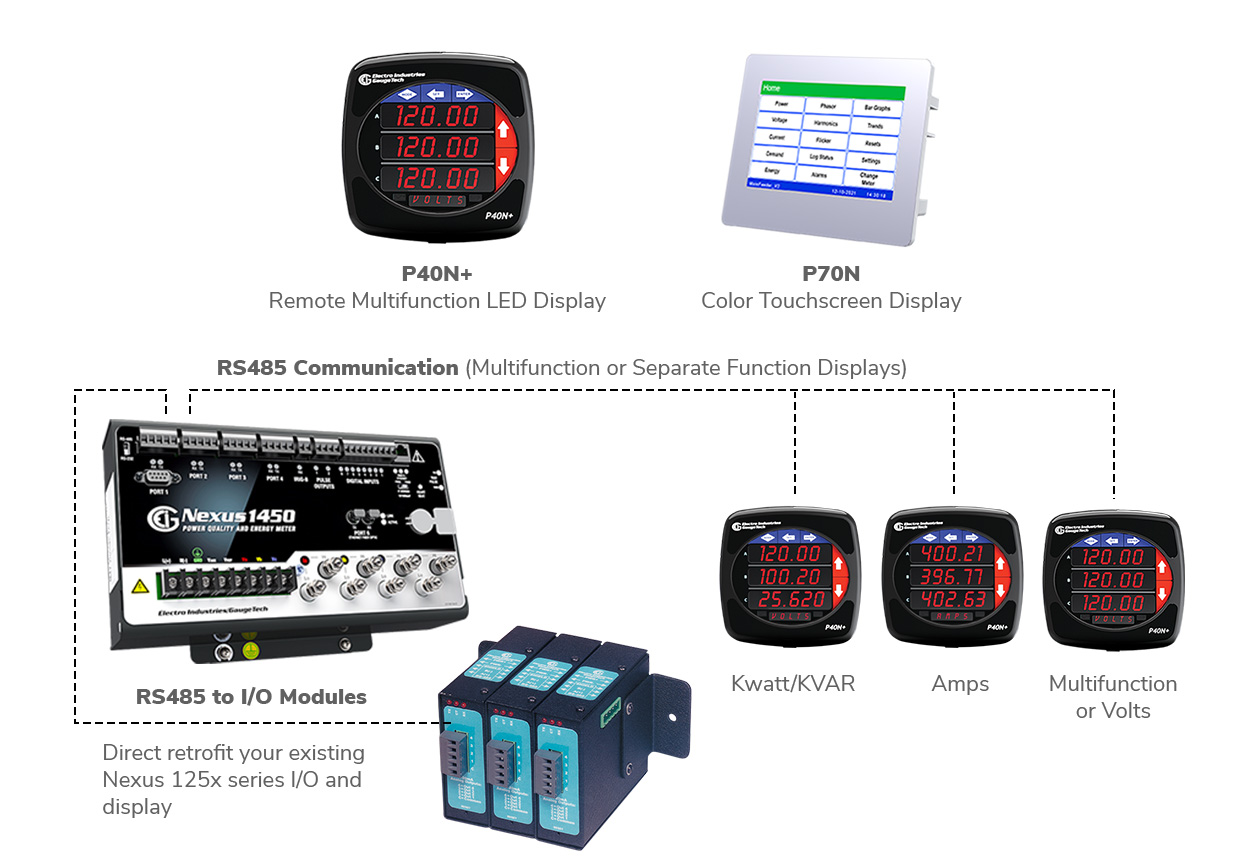
Direct Retrofit with Advanced Remote Displays
Replace Older Meters without Panel Modification or Recertification
- Transducer/remote display direct retrofit to older Nexus® 1252 meters makes installation cost effective.
- Remote displays retrofit to ANSI cutouts, so the power quality meter can be mounted in back of panel.
- P70N color touchscreen LCD display offers multiple pre-configured screens.
- P40N+ LED display can act as a master to P41N+ Ampere and P43N+ Power displays, providing 3 panel displays on one connection powered by the meter. This is ideal for substation and power plant applications.
Downloads
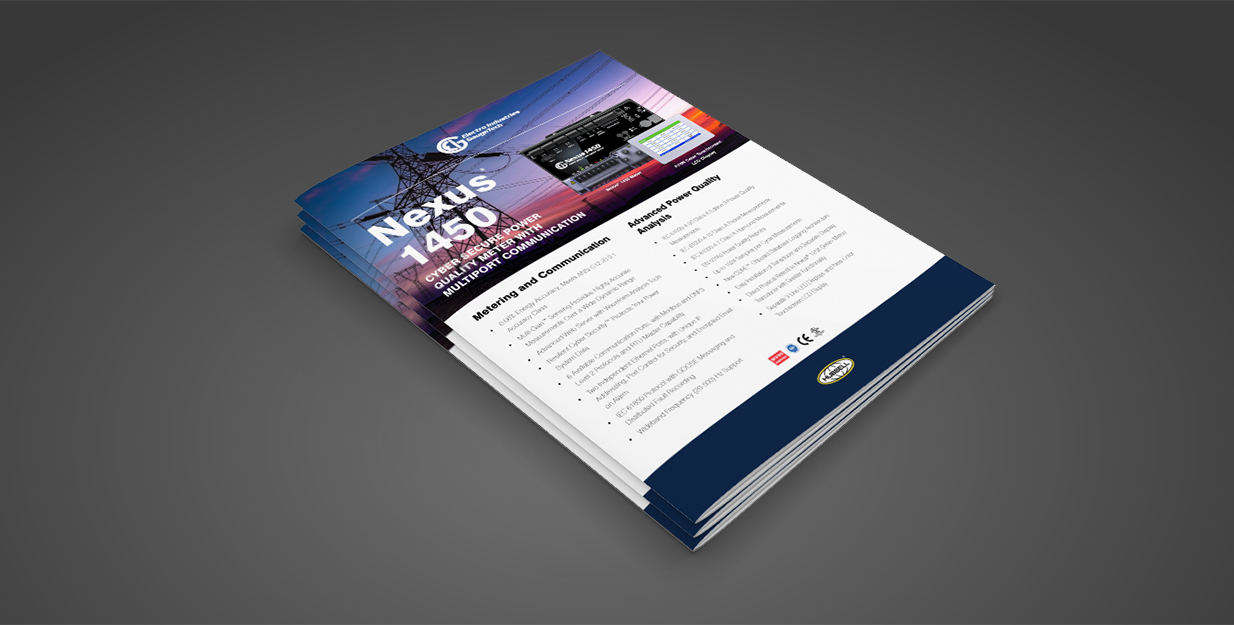
What is power quality meter?
A power quality meter is a device used to measure the quality of electrical power being supplied to a load. It analyzes the various aspects of power, such as voltage, current, frequency, and waveform distortion, to ensure that they fall within acceptable limits. A power quality meter helps to identify issues like power surges, harmonics and voltage unbalance, which can damage electrical equipment. The data collected by a power quality meter is used to evaluate power system efficiency and reliability and to identify opportunities for energy savings.
What are the types of Power Quality Issues?
Power quality is the degree to which the electrical power flowing to a device is within a certain range of characteristics. The quality of power can be affected by many things, including surges, sags, voltage imbalances, harmonics, and noise. These different factors can affect the performance of equipment and cause downtime. By using a power quality meter, users can measure and analyze the quality of the electrical power being delivered, and identify issues that may be impacting equipment performance. Overall, power quality is an important consideration for ensuring the reliable operation of electrical equipment.
What is the function of PQ meter?
A power quality meter (PQ meter) is an essential tool that measures the quality of electrical power in an electrical system. It monitors various electrical parameters such as voltage, current, frequency, harmonics, and power factor, providing vital information about the power system’s health and performance. PQ meters often record waveform when a PQ event occurs, to enable users to analyze the cause of the event. PQ meters can detect power anomalies such as sags, swells, transients, and interruptions that could cause significant damages and financial losses. PQ meters are widely used in the industrial, commercial, and residential sectors to ensure efficient, reliable, and safe power distribution.
How do you measure power quality?
To measure power quality, you need a power quality meter that can analyze voltage and current waveforms and calculate power parameters. These meters measure a variety of parameters, such as frequency, voltage variations, and harmonics. Additionally, they can measure dips, sags, and interruptions. Furthermore, they monitor power factor and can provide data on flicker and inrush current. Power quality meters help ensure power reliability, improve energy efficiency, and increase equipment lifespan by identifying power issues. They provide data on both short-term and long-term power quality issues and can assist in addressing and solving them.
Where are power quality meters used?
Power quality meters are used in commercial, industrial, and residential settings, pretty much anywhere energy is being analyzed. PQ meters are essential in ensuring that the electricity supplied to various devices and equipment is stable and reliable. They monitor power systems and detect issues such as voltage fluctuations and harmonic distortion, that enable the user to troubleshoot problems. With the increasing reliance on technology, power quality meters are becoming even more critical in identifying problems that may cause damage or disruption to electrical systems and the devices that depend on them as well as harmonics and transients caused by newer technology. By providing accurate and reliable measurements, power quality meters are essential for ensuring an uninterrupted and stable power supply.




